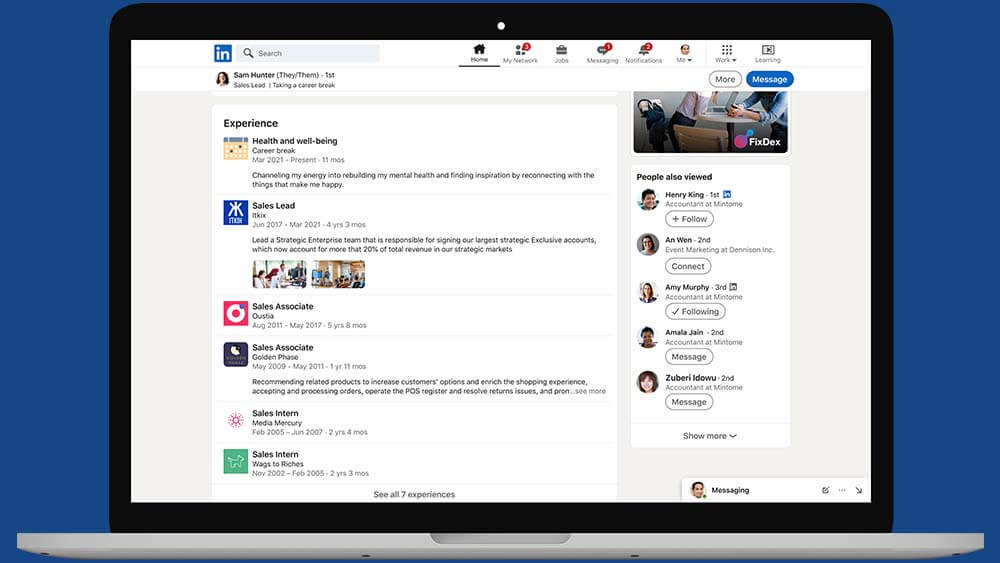
LinkedIn’s new Career Breaks tool allows individuals seeking to return to work to easily explain employment gaps, with 13 options such as health and well-being, full-time parenting, and bereavement. (Courtesy LinkedIn)
Since early in the pandemic, research has shown that women were exiting the workforce in greater numbers than men — in fall 2020, McKinsey & Company’s sixth annual Women in the Workplace study spotlighted that one in four women considered downshifting her career or leaving the workforce altogether because of COVID-19. And that number has only gone up — in the 2021 Women in the Workplace study, one in three women were considering the same. A number of these job departures, according to the National Women’s Law Center (NWLC), have to do with women’s frequent role as the caregiver within their household. The U.S. Bureau of Labor Statistics supports these studies — it found that 1.1 million women have left the workforce entirely since the pandemic began.
The good news is, two in three women who were forced out of work at some point in the pandemic plan to return eventually, according to a MetLife survey, and with the pandemic potentially lessening its grip on the world, a return to work may be possible. So how can those preparing a comeback frame their gap in employment as an asset — rather than a disadvantage — in a competitive job market?
LinkedIn recently introduced a Career Breaks tool that will help individuals seeking to return to work normalize employment gaps. LinkedIn surveyed nearly 23,000 workers and more than 4,000 hiring managers and found that nearly two-thirds of employees have taken a break in their professional career. And yet, they also found one in five hiring managers are hesitant to hire candidates with employment gaps.
“But we’re also seeing a shift in perspective,” wrote Jennifer Shappley, vice president of Global Talent Acquisition at LinkedIn in an announcement about the Career Breakers launch. “We’ve found that nearly half of employers believe candidates with career breaks are an untapped talent pool.”
Using this feature, LinkedIn members — including the 68 percent of women LinkedIn surveyed who want positive ways to represent their professional breaks by highlighting their gains during that time — can explain gaps in their resume by choosing from 13 categories of explanations, ranging from full-time parenting to bereavement. Users can also explain what skills they acquired during this period.
“What some employers may not realize are the varied benefits that a career break can bring: fresh perspectives, new skills, and a renewed sense of energy,” Shappley wrote. “Over half (56 percent) of employees say they acquired new skills or improved existing ones — such as problem-solving, communication, and budgeting — during their career break. And over half (54 percent) of women say they are better at their job than they were before.”
Casey Gale is managing editor at Convene.
